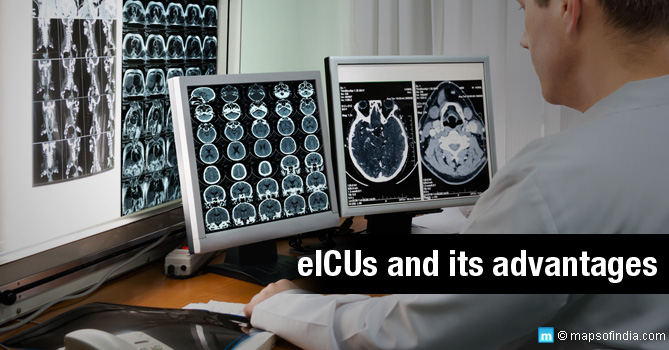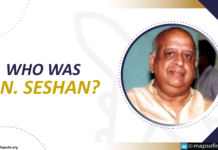Healthcare Boom in India
The one sector in India that has seen a phenomenal growth over the past few decades is the healthcare industry. Not only is India emerging as one of the most preferred medical tourism destinations anywhere in the world, the number of domestic patients and healthcare seekers has also risen considerably. Advances made in technology and medicine is one major reason, increase in incomes and development of healthcare insurance are other reasons why more and more people are seeking medical services. According to a recent news report, the Indian healthcare sector is expected to grow at a compounded rate of 16 percent each year and is likely to be worth about USD 280 billion by 2020. Major hospital chains are opening up newer branch hospitals many of them speciality treatment centres, and smaller hospitals and nursing homes are mushrooming across the country.
Dismal Doctor Patient Ratio in India
The entire healthcare scenario in India would seem to be a rosy and heartening one till we stop to consider this. India is falling alarmingly short on qualified doctors and trained nurses. The human element is failing to catch up with the great advances in infrastructure and facilities in the country. According to a report on the Indian healthcare sector by leading analysts, PricewaterhouseCoopers (PwC), India will be requiring about 6 million trained nurses and some 3 million doctors in the next two decades. Even at present, the patient doctor ratio in the country is one of the worst anywhere in the world. In September 2013, the World Health Organisation (WHO) said that there is only about 1 doctor per 1700 people in India – a dismal figure, considering that WHO standards require a 1:1000 doctor patient ratio for a healthy nation. Currently, India has only about 6.5 lakh doctors and will need some 4 lakh more by 2020. ICU admissions are pegged at about 5 million each year; there is a requirement of about 50,000 trained intensivists in the country while there may be only about 8500 trained intensivists and every one of them in a metro city.
Enter eICU (Electronic Intensive Care Unit)
The crippling shortage in number of doctors, especially physicians trained in specialities such as critical care, is telling on the quality of treatment provided by hospitals and nursing homes. This problem is compounded manifold in rural regions where healthcare heavyweights are yet to establish a presence. Government hospitals and clinics in most rural regions are severely understaffed. Worst hit are the intensive care and critical care patients from villages and small towns who require round-the-clock monitoring, but are unable to avail of such facilities.
The telemedicine initiative that has been introduced to combat this crippling shortage of doctors and medical practitioners in distant areas by linking it up with a central command center of another well-equipped hospital (usually in urban areas) is called an eICU. Simply put, this means that the real time monitoring of a patient’s vital stats and condition (from a remote location) is done by doctors in a different location (command centre).
Doctors at the command centre are connected with the patient through dedicated live video and audio feeds, bedside monitors, and data digitization software that provides inputs on the patient’s condition. eICUs are manned 24×7 at the command centres and specialized physicians provide the healthcare providers at the remote location timely guidance with regard to the patient’s treatment.
eICU ( Electronic Intensive Care Unit ) in India
Back in 2012, GE HEalthcare entered into a partnership with Fortis Healthcare to launch one of the nation’s earliest electronic Intensive Care Unit (eICU) facility — Critinext. Apollo Hospitals Enterprise, the nation’s largest healthcare chain introduced eICU soon after. Even as both Fortis and Apollo made clear their intentions of scaling up their eICU operations and of setting up more command centres across India, a number of other healthcare and hospital chains are planning to tie up with GE and Philips to set up eICU centres and tie up with smaller hospitals and facilities in remote locations.
At the moment Apollo has one eICU facility (command centre) at Hyderabad and utilizes this to monitor and treat 200 patients across 6 different states in the country. The hospital group intends to open up three additional centres with eICU monitoring facilities that will enable about 1000 patients to avail of the tele-treatment option at any given time. At this rate Indian hospitals may also be able to monitor and treat patients in Bangladesh using the eICU option. This is precisely what Fortis plans. Its current eICU facility in Delhi manages about 350 patients across north India. By 2017, it plans to have two additional command centres that manage patients from as far as Bangladesh. eICU admissions are likely to see a 15-20 percent growth each year, news reports say.
Boon or Recipe for Disaster?
eICU is certainly a game changer in hospital systems and the way the healthcare industry works. eICU facilities and tele ICU units have been functioning successfully across the globe, more significantly in the Americas. In India, it is a breakthrough in delivering treatment while managing the acute shortage of doctors trained in critical care. The eICU technology, however, suffers from some shortcomings.
- The infrastructure required to successfully maintain eICU facilities in great numbers is still missing. This includes dedicated and ultra fast Internet or LAN connectivity between the remote units and the command centre monitoring the eICU.
- The commercial aspect of the eICU technology makes it possible only for private nursing homes and hospitals to be connected. Government healthcare centres and hospitals are far from being on the eICU connectivity route. This means that a great part of rural India will still remain excluded from the benefits.
- The costs involved make the eICU in its current form available only by rich patients across the country.
Balancing Act
While eICU is a breakthrough in patient care, it cannot replace the human element in treatment. India’s lack of trained doctors is still an alarming situation that needs attention and remedy. For the country’s healthcare system to take off, there needs to be a balance between the number of trained doctors available to treat patients on the ground and for technological advances to offer treatment options. This is one balancing act India needs to sort before its medical system can take the lead in the global scenario.
Explore More:
- Impact of Corruption in India’s Healthcare Sector
- Healthcare sector in India – Another economy booster
- Health Insurance/Mediclaim – FAQs
- Aam Aadmi polyclinic to boost healthcare
- Cancer Treatment gets Cheaper with Project AMRIT
- Tips to prevent heart attacks in women
- The Indo-Dutch Healthcare Partnership: What’s in it for us?




